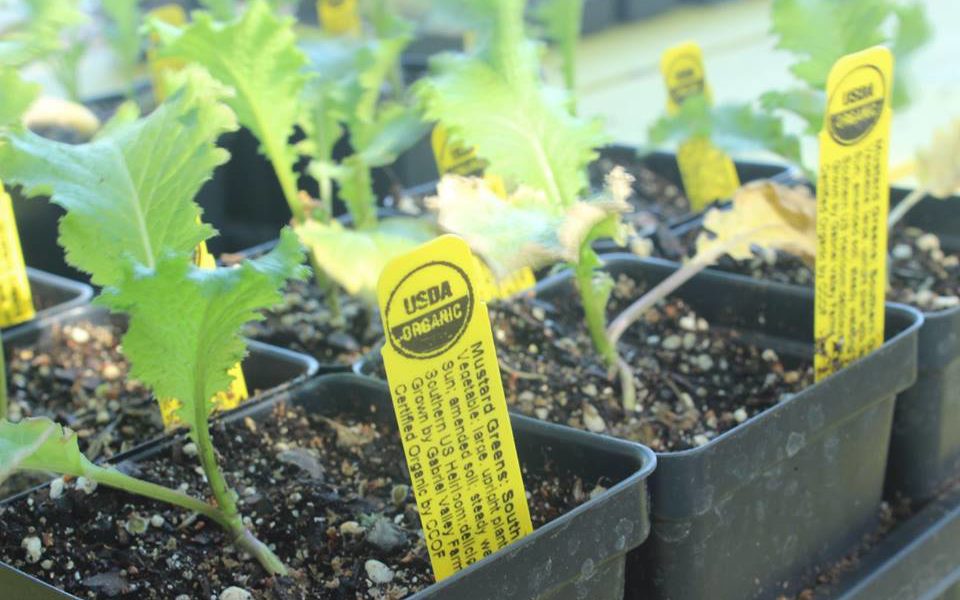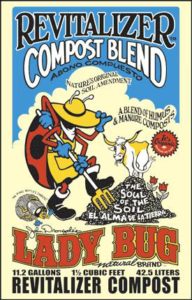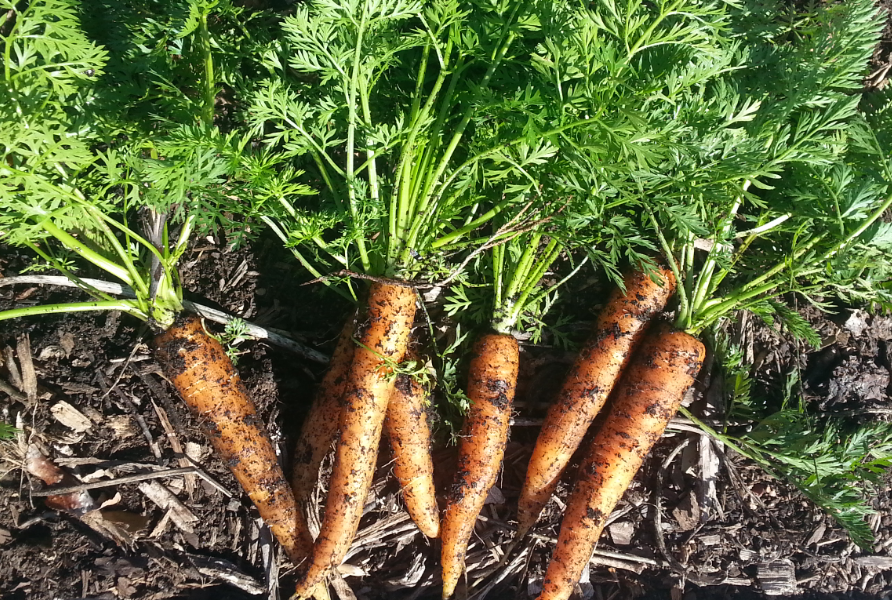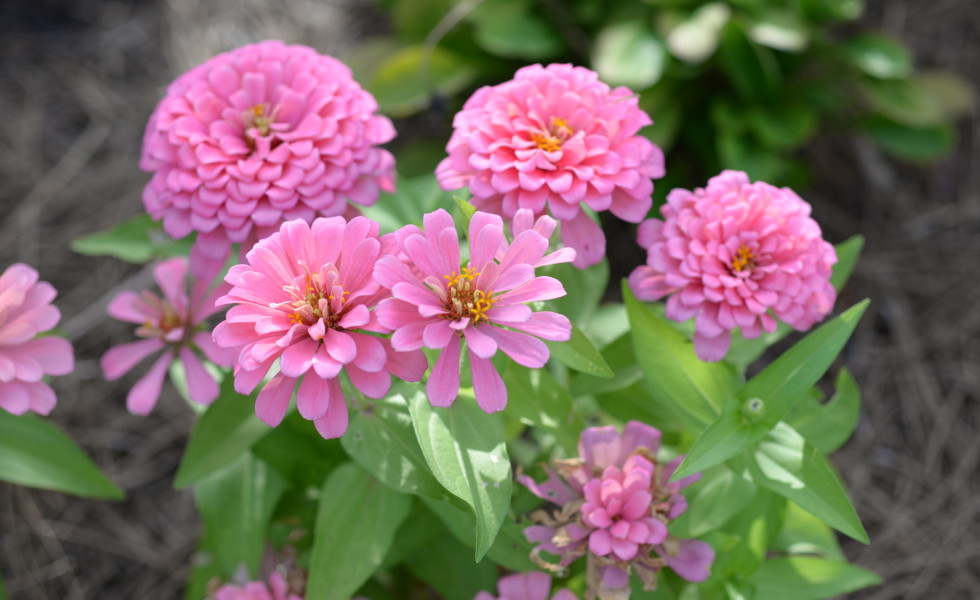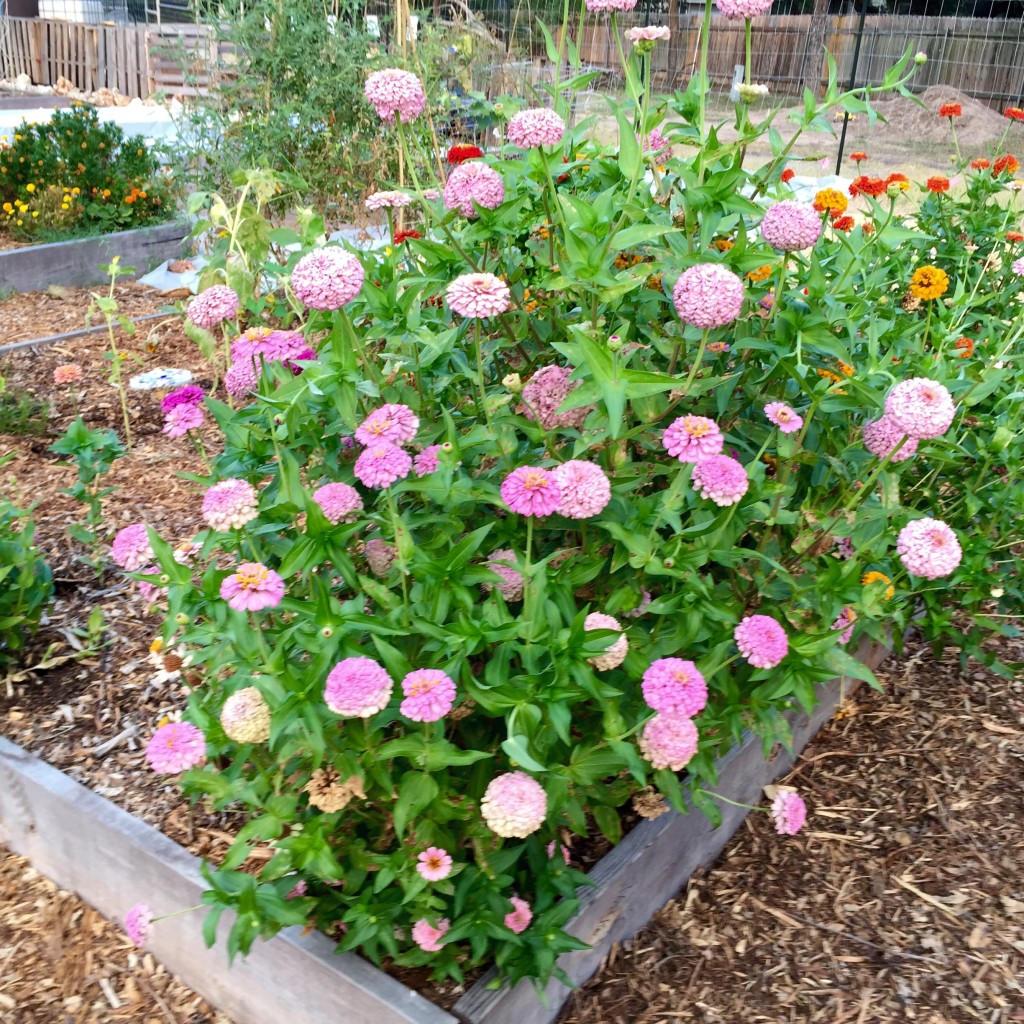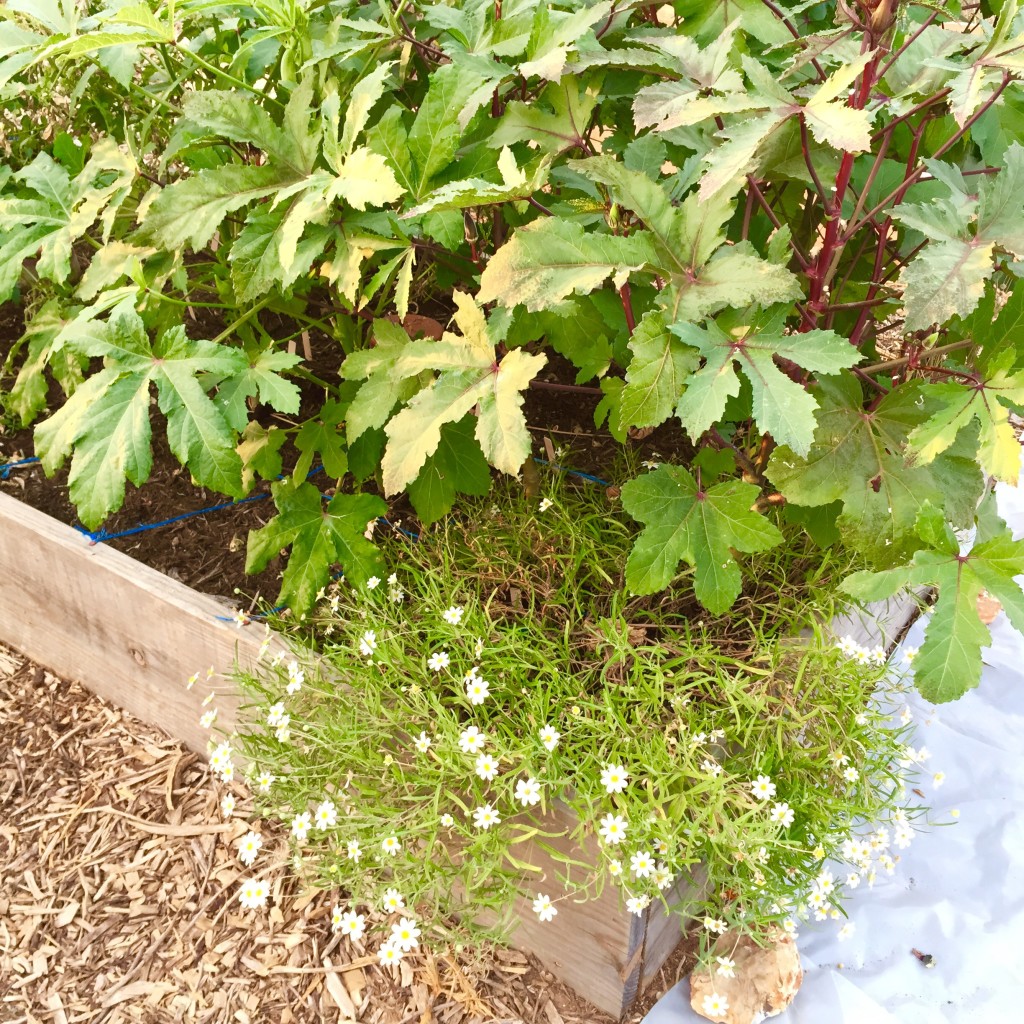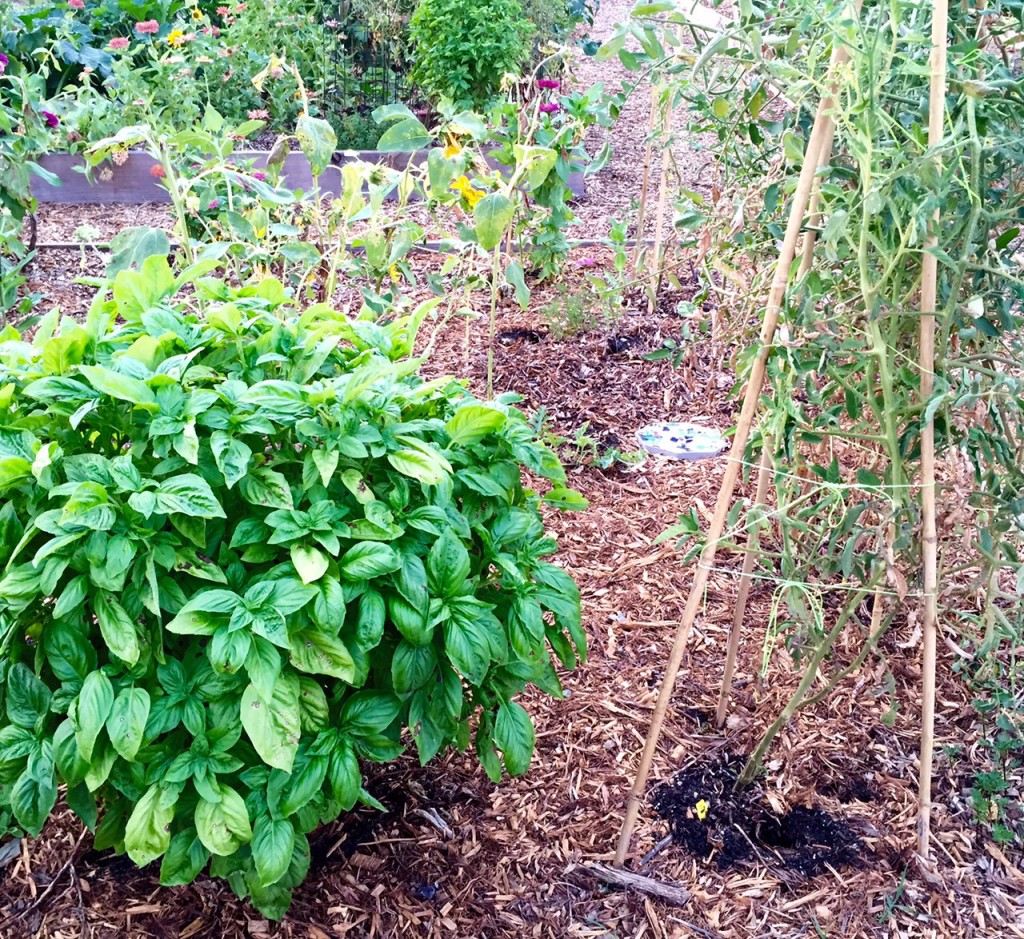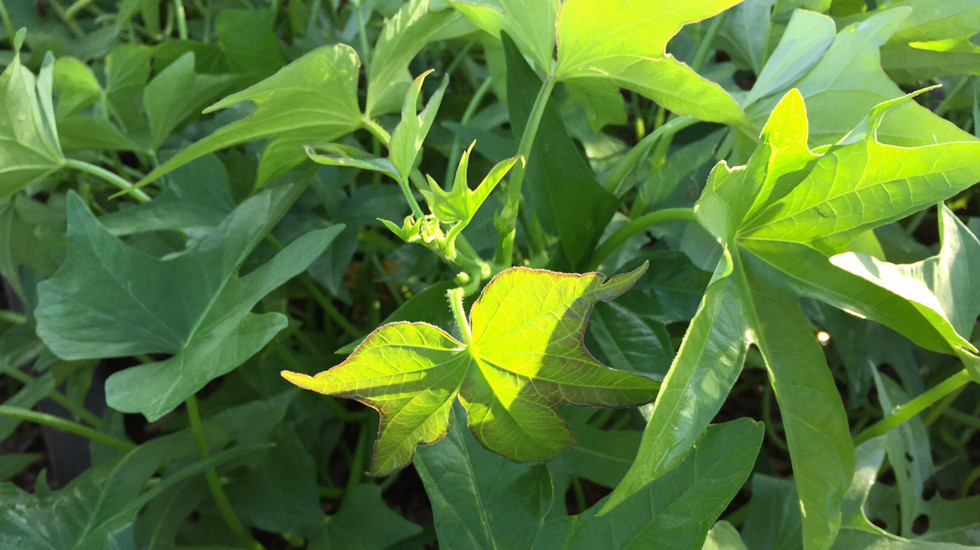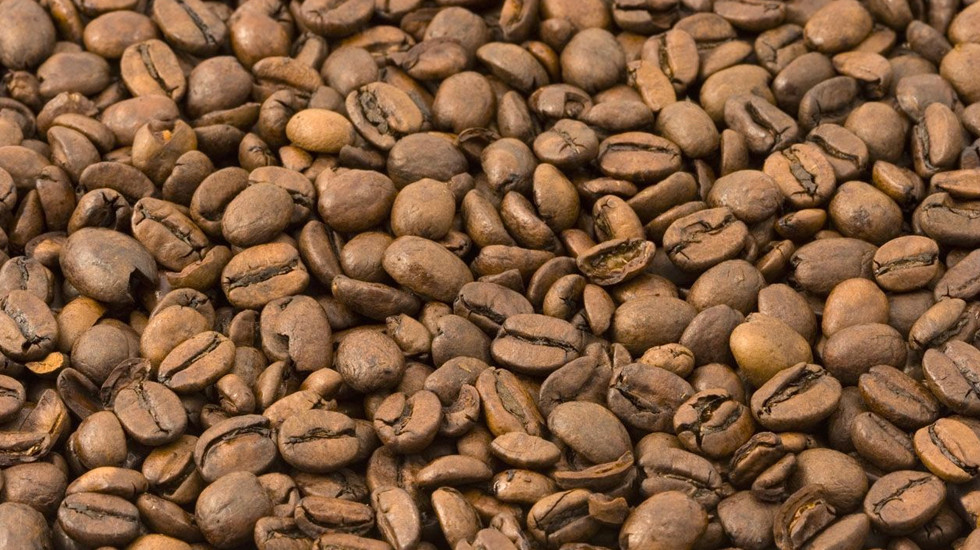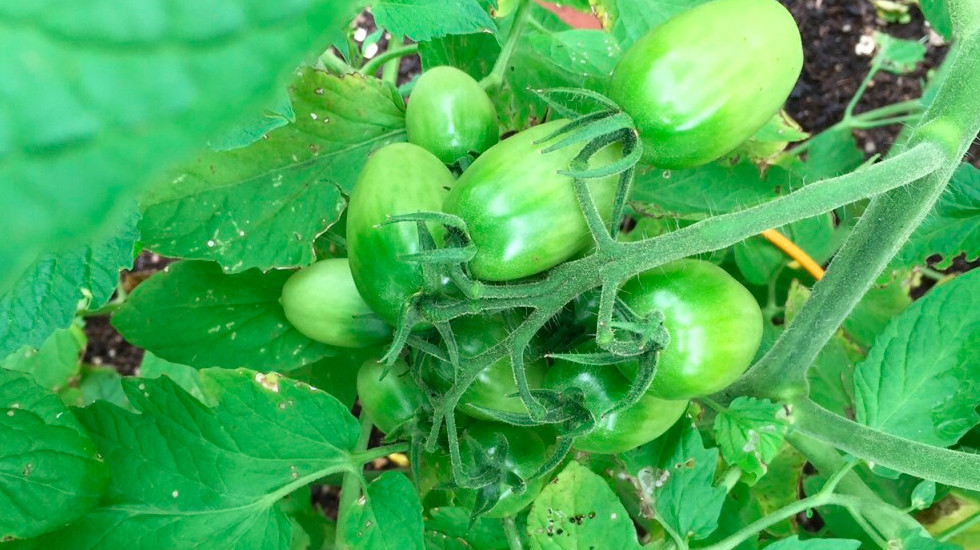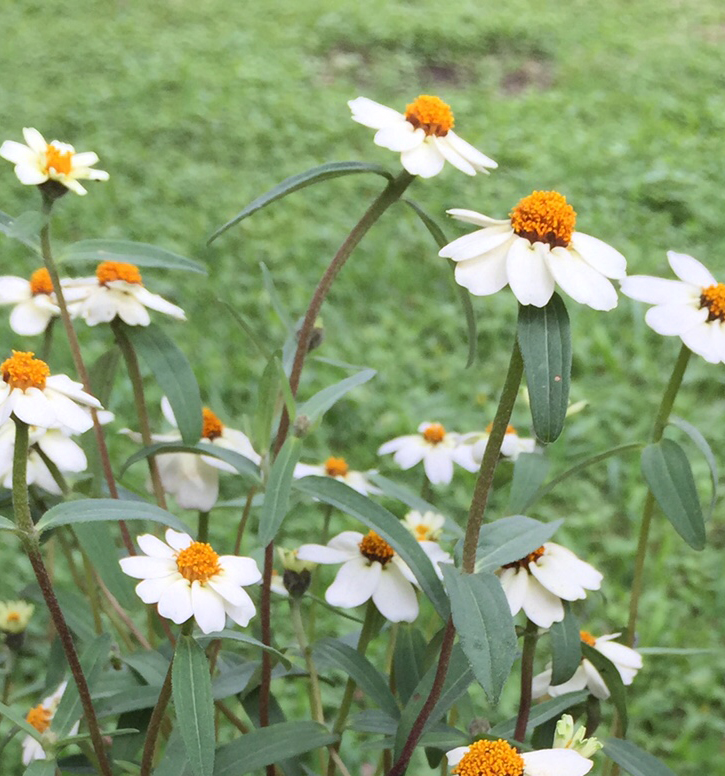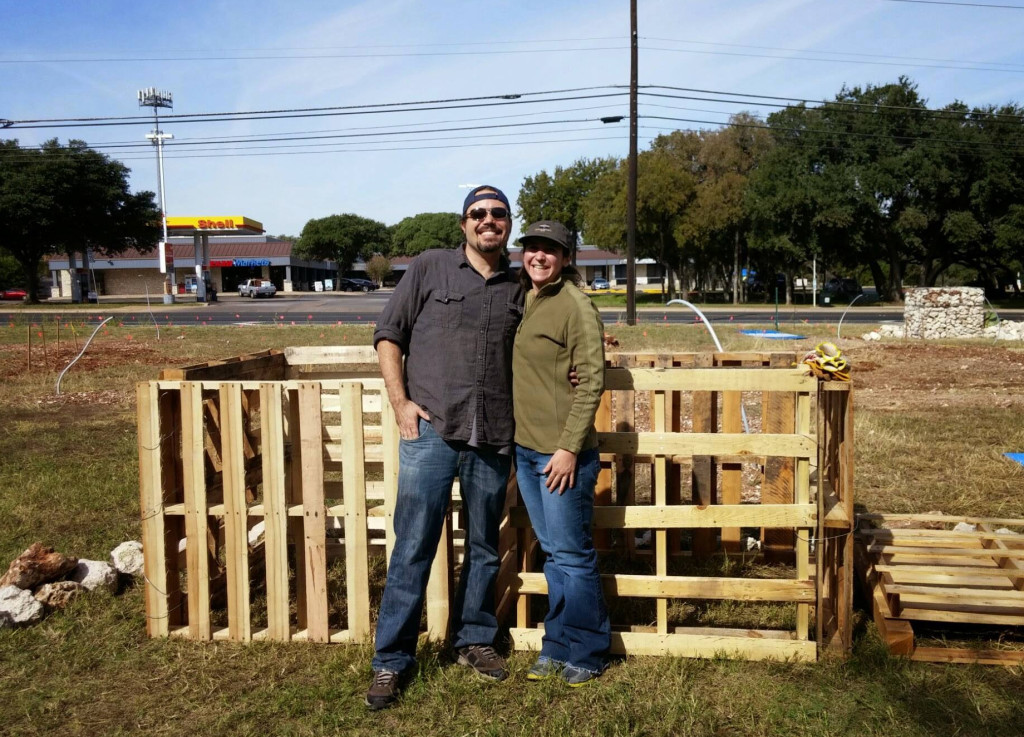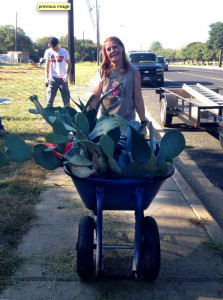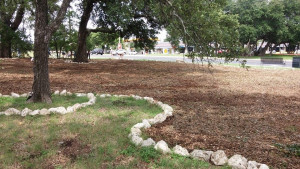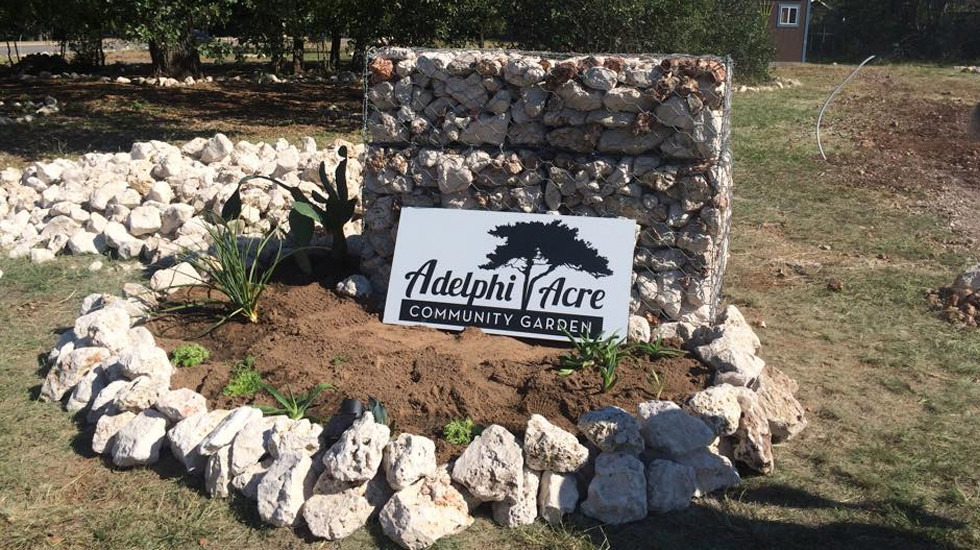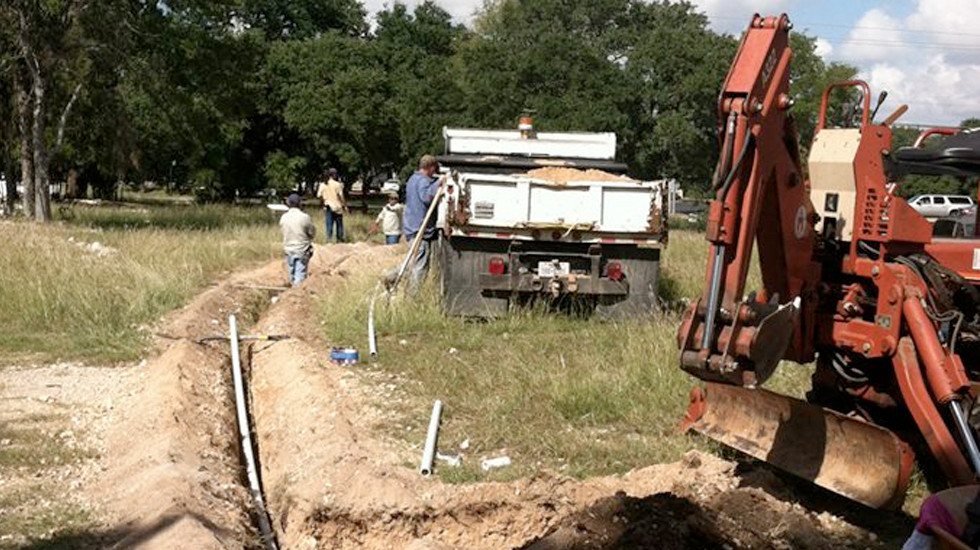
Double, double soil and trouble
Late summer through early fall is a hard time to garden in Austin. If your summer plants are struggling and using more water than they are producing yields, it’s a good idea to start considering your fall and winter garden. Pull out stressed plants and work on replenishing your soil before planting fall or winter plants. Vegetables will deplete vital minerals and nutrients during their lifespan and it’s important to replace these periodically and before adding new plants. Those dry, yellow leaves on the bottom of your tomato indicate a lack of nitrogen. Plants use potassium to open pores widely when water is available and close during a drought so our long dry summer will deplete this element.
Some great ways to replace nitrogen and potassium include using a fish emulsion, liquid seaweed, animal manure, cottonseed meal, coffee grounds, wood ash and or good ole compost. A few other important nutrients that get used up are calcium, magnesium & sulfur. Dolomitic Limestone, bone meal, wood ashes and compost can be added to the soil to restore these elements. And don’t forget crop rotation! It’s always a good idea to move plants around as long as you don’t plant them near something that’s not a good companion.
Cover crops are a great idea to plant over winter if you don’t plan on planting much and just want to get your bed in the best shape for spring. Or you can plant along with winter varieties and pull before they seed. The general idea is to plant these low maintenance crops and till up and mix into the soil before your next round of planting. You should wait a few weeks before adding back to the soil and don’t want to start planting right away. Alfalfa, peas and clover are all good options as they absorb nitrogen directly from the air and make it available in the soil. Mustard is also a great cover crop that is naturally toxic to pests and soil nematodes.
If you’ve cleaned out your bed of summer plants and amended your soil or have a new bed ready, late August to September is the perfect time to start thinking about planting these:
Beans, beets, broccoli, Brussel sprouts, cabbage, carrots, cauliflower, cucumber, garlic, kale, potatoes, lettuces, mustard, onion, potatoes, snap and snow peas, radishes, shallots, spinach and squash.
Don’t forget to consult the A&M vegetable planting guide here: http://aggie-horticulture.tamu.edu/travis/wp-content/uploads/2015/09/VegPlantingGuideJan2015.pdf
Happy Gardening!
Pollination Basics
Last year I didn’t have any luck with the Brussels sprouts I planted over the winter and I wondered if it was because I covered my garden in the winter, thereby preventing the plants from being pollinated? I wasn’t really sure that they needed to be pollinated which brought to mind something else I often wondered about, what garden vegetables needed or didn’t need pollination by bug or bird? It seems pretty obvious that anything with a flower needed pollination since that is a flowers main purpose but what about plants before they flower?
I have written about sweet potatoes before and discovered that NASA selected them as one of the crops for their advanced life support program because of their nutritional value, edible greens, light requirements, adaptability, drought resistance and high yield. This would lead you to think that even though the plant does flower if it could survive in space it most likely didn’t need pollinators like bees. If you’ve read or seen the Martian, you’ll know that the stranded astronaut starts farming potatoes without the aid of pollinators. Instead is propagating plants from existing potatoes and not from true seeds. Since he’s not expecting the potatoes to seed he doesn’t need them pollinated. I’ll leave the discussion about the advantages of planting true seeds as opposed to propagating from existing plants for another time.
While I’m no expert, what I’ve finally learned after several years of gardening is that when we grow root vegetables, we usually harvest the roots. The roots act as storage containers for the plant and if left or replanted will produce flowers that require pollination to create seeds. If you don’t need the seeds you just harvest the roots, leaves or florets. These include brassicas, broccoli, cauliflower, cabbage, potatoes, carrots, parsnips, beets turnips, celery, onions and leeks.
Flower pollination is needed for vegetables grown for their fruit like tomatoes, melons, cucumbers, berries and eggplant. Leafy greens and the parts of brassicas we eat like Brussels sprouts, broccoli, cauliflower are the flower buds before they bloom so pollination is not required for a harvest. They’ll only require pollination if you want them to flower and produce seeds.
Even if you want to pollinate vegetables for seeds, some vegetables are biennial and won’t seed in the first season. Biennial vegetables include: beets, Brussels sprouts, cabbage, carrots, celery, chard, collards, Florence fennel, kale, kohlrabi, leeks, onions, parsley, parsnips, winter radishes, rutabaga, and turnips.
About 80% of plants require pollination from insects or birds. This is known as biotic pollination. This is yet another reason why pollinators such as bees, butterflies and humming birds are so important in the garden. Pollinators transfer and deposit pollen between flowers or different plants and sometimes varieties. Cross pollination can result in more diversity and therefore disease resistance in a plant. Fortunately, this can only occur between varieties of the same species. When cross pollination occurs it can results in hybrid seeds.
The remaining 20% of flowering plants do not require help from bugs or birds. These vegetables are either pollinated by the wind or are self-pollinating. Self-pollinating plants deposit pollen on their own which allows some varieties to survive and exist without pollinators. That’s how my snow peas are able to produce legumes even though I haven’t seen any bees or butterflies in months. Some other self-pollinating vegetables include lettuce, tomatoes, peppers, eggplant, peas and beans.
The ability to produce fruit with or without the aid of pollinators helps explain the prolific nature of some plants. At the same time, the biennial nature of some crops that don’t produce seed the first year also explains the lack of some volunteer plants. As they say, the more you know, the more you grow!
If you’re ready to get started on spring planting here’s a list of what to plant in March.
- Beans
- Cantaloupe
- Corn
- Cucumbers
- Eggplant
- *Peppers
- Pumpkins
- Warm season greens
- Squash
- *Tomatoes
* the average last frost is March 8, so use caution planting or transplanting tomatoes or peppers
Companion Planting
Ever wondered why so many gardeners have marigolds in their beds? Not only do they deter deer, they are commonly used as companion plants. Companion planting is a method favored by organic gardeners that involves planting different crops together that benefit each other. These benefits include natural pest control, aiding pollination, adding or removing elements to and from the soil and structural benefits. It’s a little early to start planning for your spring garden but when you do, here are some ideas and methods to take into consideration and try out.
Marigolds and nasturtiums have more than just a pretty face. Both have scents that keep garden pests like whiteflies away and the roots of French marigold deter parasitic nematodes. Nasturtiums attract aphids keeping them ways from other plants but deter squash bugs, cucumber and pumpkin beetles and many other pests. But wait! There’s more – the flowers and leaves are edible too. You can use them in salads among other things. Sunflowers can provide some much needed shade and they also attract aphids acting as a pest trap. Petunias (and borage) repel tomato hornworms and many beetles. Bee Balm and Zinnias attract pollinators.
The square foot gardening system is a popular system used widely at Adelphi Acre. It incorporates companion planting, planting close together to prevent weeds and planting a wide variety of crops to help prevent plant disease. One of the more interesting companion concepts combines habitat and intercropping. The three sisters’ technique consists of planting corn, squash and beans close together. The corn acts as a trellis for the beans to climb and the squash spreads on the ground and acts a mulch, keeping weeds out but moisture in. My sweet potatoes do this for my beds acting like a ground cover, with tubers growing underneath. Intercropping is planting tall, strong crops to provide shade and shelter for shorter crops and intermixing plants with deep roots with plants that have shallow roots. Deep rooted plants can provide shelter from wind and rain.
Other companion plants are beneficial because of what they add or remove from the soil. I wrote earlier about adding beans to add more nitrogen to the soil. Many crops deplete nitrogen but you can plant beans and peas to add it back. Beets add magnesium to the soil. Garlic keeps more than vampires at bay. Planted garlic accumulates sulfur that acts as a fungicide.
Some plants improve the health and even flavor of others. Like a caprese salad, tomatoes taste better with basil. Onions improve broccolis’ flavor. Tarragon and savory repel pests, are great herbs to cook with and improve the flavor of many vegetables. Chamomile improves the flavor of other herbs and attracts pollinators.
Unfortunately, not all plants get a long and it’s not a good idea to keep friends close but enemies closer. There are certain plants that are detrimental to each other and compete for resources. But that’s a blog for another day. There are many lists and charts available online to help guide you to compatible plants and which plants to avoid. Just google it and use a chart to help you plan your garden. One of my favorite, comprehensive resources is this site: https://www.ghorganics.com/page2.html. You can also find many planting resources in the Member Resources section of this website, Member Resources.
Sweet Greens
Last year, I grew sweet potatoes for the first time. They are easy to propagate, low maintenance and produce beautiful leafy vine like leaves and purple flowers. My neighbor told me you could eat the potato greens but I never got around to trying it. I think the old saying that potato leaves are poisonous subconsciously made me disregard the idea. Sweet potatoes and regular potatoes are not from the same family and while the leaves from regular potatoes do contain a toxin that affects some people, the leaves from sweet potatoes are actually an amazing green eaten all over the world.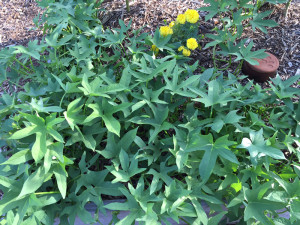
I finally decided to look into it since the sweet potatoes I planted at Adelphi had leaves starting to grow outside my plot and the vines were putting down shoots all over my plot. I realized I had to keep the plants in check and would regularly need to trim and use the leaves.
Sweet potato leaves, I discovered, are a highly nutritious green that can be used like spinach, kale or Swiss chard but with a milder taste. They have 3 times more B6 and 5 times more vitamin C than the actual sweet potato. The whole plant is so nutritious and such a good source of antioxidants, NASA has selected the plant to be grown in a controlled system as a primary food source. The leaves can be harvested repeatedly while the tubers grow, making it a dual purpose crop.
 As I discovered last year, sweet potatoes are easy to grow and can grow in poor, dry or wet conditions making them a great crop for beginners or gardeners with poor soil conditions. They are also tolerant of pests and disease. To propagate, all you need to do is cut a potato in half; submerge a portion of the bottom in water, place in a sunny location and wait for the slips to grow. Leafy slips will sprout and from all over and start growing roots. When they are big enough you just pinch the slip off and plant! You can start 10 or so new plants from half a potato.
As I discovered last year, sweet potatoes are easy to grow and can grow in poor, dry or wet conditions making them a great crop for beginners or gardeners with poor soil conditions. They are also tolerant of pests and disease. To propagate, all you need to do is cut a potato in half; submerge a portion of the bottom in water, place in a sunny location and wait for the slips to grow. Leafy slips will sprout and from all over and start growing roots. When they are big enough you just pinch the slip off and plant! You can start 10 or so new plants from half a potato.
Greens can be eaten raw in a salad or sautéed and added to an omelet, pasta or in anything you’d normally use spinach in. For my first attempt I decided to sauté them in some olive oil, shallots, garlic, salt and some of the abundant Juliet tomatoes I have on hand. Next I’m going to try some in a coconut curry with chick peas. If it works, I’ll post the recipe. If you’d like to try some feel free to stop by my bed number 9 and clip some leaves. They are growing outside the box and I could use the help keeping them trimmed!
Coffee Talk
Last month I wrote about the soil conditions at Adelphi acre, our “new” soil and additives to help improve the condition of the soil. One of these additives is the cheap, always around and overlooked used coffee grounds. In addition to our interest in initiating the garden as a Ground to Ground drop off location, I’d like to share some other benefits of using used grounds in the garden.
We’re still working on and finessing our compost system but we plan on accepting used coffee grounds and composting with them at AACG. Coffee grounds turn up the heat in compost piles by raising the temperature which speeds up the process of breaking down contents. They also neutralize odors and while we may love the smell of coffee in the morning, the strong smell supposedly confuses and keeps away pests like squirrels and insects.
Back to the benefits of having it your soil. Evidently, earthworms are attracted to grounds because the gritty grounds help their digestion. Worms help process scraps into nutrients that plants can absorb.
If your soil is acidic, coffee grounds can help balance it due to its slight acidity. As mentioned in my previous post, new soil can lack nitrogen which coffee grounds contain a lot of. The nitrogen is broken down and released slowly. The multipurpose nitrogen also burns the legs of ants so they will stay away!
At least 5 other nutrients necessary for plants can be in coffee grounds. These include phosphorus, potassium, calcium, magnesium and copper. Used grounds can even help with one of the problems all this rain has been causing – fungal rot and wilting. Research has shown that the bacteria and mold found on decomposing grounds prevents other deadly fungi from forming. It also aerates and helps soil drain better, something necessary with all the moisture we’ve been gifted with.
If you drink coffee, stop pitching the grounds and compost it or add it directly to your garden and plants.
Most of the beds in the garden are turning a corner and starting to thrive. If you haven’t had any luck or not sure what’s going on, please email or ask us. Many of us have tried different additives and remedies and have a good idea of what works for our soil and conditions. We’d also like to encourage phone number swapping with a friend or neighbor who might be able to water if you can’t get to the garden or pick ripe produce for you so it doesn’t attract animals.
Thanks for reading and remember – Gardeners learn by trowel and error!
Gardening Blues
If you’re wondering why your new plants and seedlings, planted in the brand new, squeaky clean garden soil and relatively weed and pest free garden beds are not doing as well as you expected, you are not alone. The reason is exactly because the soil is new. When this was first noticed, committee member Beth, asked one of the Travis County Gardeners at the grand opening what was going on. They told her that the new soil was lacking nitrogen. Nitrogen is an essential element of chlorophyll, therefore plants lacking this component will not produce as much chlorophyll and will turn yellow. This also stunts growth, flowering and the overall vigor of an ordinarily healthy plant.
I’ve received enough questions and concerns that I asked the Travis County Master Gardeners for some advice on this growing pain. David was more than helpful and sent me the following:
Improving the Condition of Your Soil
Most garden soils present challenges to the home gardener. The simplest soil mix consists of equal amounts of compost, coir fiber (instead of peat moss), and vermiculite or decomposed granite or sand. This mix is ideal for raised beds or containers and is mostly weed-free. It still needs to be amended with additional organic material periodically to maximize the benefits to crops over a season.
When working with regular garden soils, there is a need to add organic matter regularly to improve the ability of the soil to accept and store water as well as to provide necessary nutrients. Organic matter increases the activity and number of soil organisms. Ideally, it is best to use composted organic materials. Fresh organic matter can introduce more soil organisms (but also weeds), so it is important to note the composition of the fresh material. Nitrogen is routinely consumed by most crops so it needs to be refreshed regularly. This can be achieved by adding coffee grounds, aged manures (sheep, beef cattle, and swine manure contain the largest concentrations of nitrogen, with poultry and dairy cattle manure following closely behind—it should be aged for about a year before use), cotton seed meal, blood meal, or feather meal. It is important not to add too much nitrogen at a time.
Fertilizers consist of nitrogen, phosphorous, and potassium. Most soils in Texas contain an abundance of phosphorous and potassium and so an ideal fertilizer should have an abundance of nitrogen and minimum amounts of phosphorous and potassium. A good general fertilizer should not exceed 8-2-4 for the three minerals. Commercial fertilizers should be used sparingly (and must be organic at Adelphi Acre). It is highly recommended that before making any major changes to your soil a soil test should be made and analyzed by Texas A&M. For information, https://aggieturf.tamu.edu/aggieturf2/soilsample/soilsample1.html.
Gardening in Texas can be challenging, but also very rewarding.
Thankful for Community
As the year winds down and we head toward the holidays, it becomes more apparent just how lucky and fortunate we are to have great friends and neighbors and such a supportive community.
Before I launch into this update, the Adelphi Acre Community Garden steering committee would like to extend our thanks and appreciation to all of the neighbors that have rallied behind us, to all of the volunteers who have spent countless hours helping this garden happen from paper to dirt, to all of our sponsors and businesses that have contributed or donated to us and to the Sustainable Food Center and multiple departments and programs at the City of Austin that guided and supported us to make our vision a reality.
At our last couple of work days we accomplished the following:
- marked and staked the water and fence lines
- constructed the first gabion basket at the entrance
- spread more mulch and moved more rocks
- started construction of the compost areas
- removed poison ivy and invasives
- planted the first drought resistant garden bed
We are having another work day this Saturday to finish a few projects so please join us from 8:30 am – 12:00 pm. We still need a few more pallets for the compost area so if you have some extra or can collect some for us please bring them by Saturday morning.
We are going to wrap up the year with another quarterly meeting potluck on November 22nd. Stay tuned for details.
Here are few pictures that illustrate just how far we’ve come and some of the community involvement and support we’re thankful for.
Groundbreaking News
In case you missed our work day last Saturday, we made some great progress! Volunteers helped us:
- Mark out the fence line
- Mow and weed whack overgrowth
- Hang our Owl House
- Build a Gabion basket for the entrance
- Mark out our compost area
- Start marking garden plots
- Plant the first garden bed by the entrance sign
Don’t feel left out though, we have another work day scheduled this weekend!
Please join us for a few hours this Sunday from 8:30am-12:30pm to finish some of these projects. Remember to wear closed toe shoes, bring gloves and a water bottle.
Make sure to check in on Facebook or your neighborhood boards for further details or request for any tools we might need or material donations.
 Thanks again to Mangia Pizza for donating lunch and to everyone who came out for all of your hard work and support!
Thanks again to Mangia Pizza for donating lunch and to everyone who came out for all of your hard work and support!
The Adelphi Acre Steering Committee
Progress!
The irrigation lines are going in and our tool shed should be delivered and built next week. Just in time for our Groundbreaking and Work Day next Saturday October 25th. We are finally ready to build and have lots to accomplish over the fall and winter to get ready for a Spring Garden! We hope you can join us for a few hours and lend a hand. Please see the flyer below for more information and sign up at http://vols.pt/ngKEkr.
 Adelphi Acre Community Garden
Adelphi Acre Community Garden